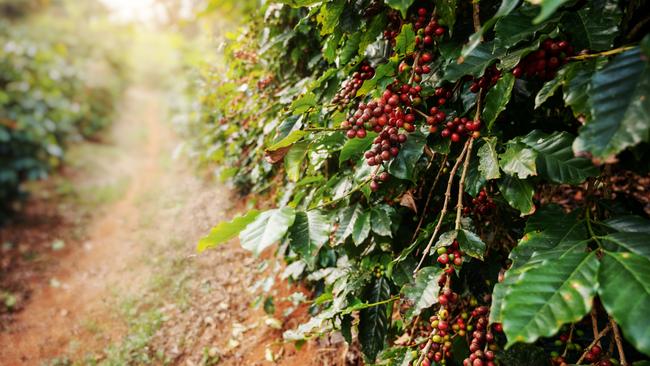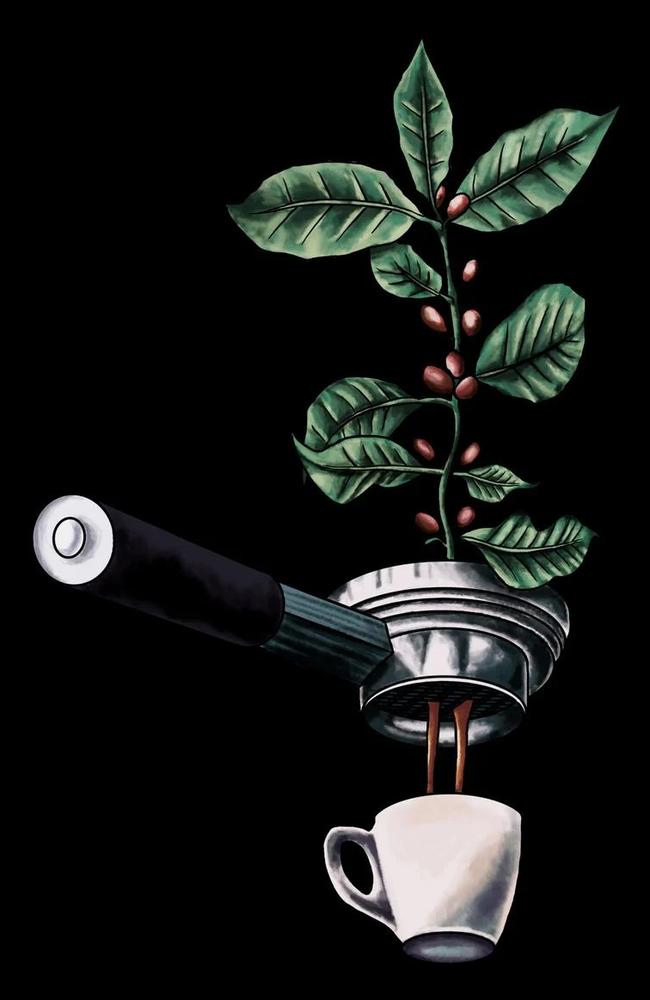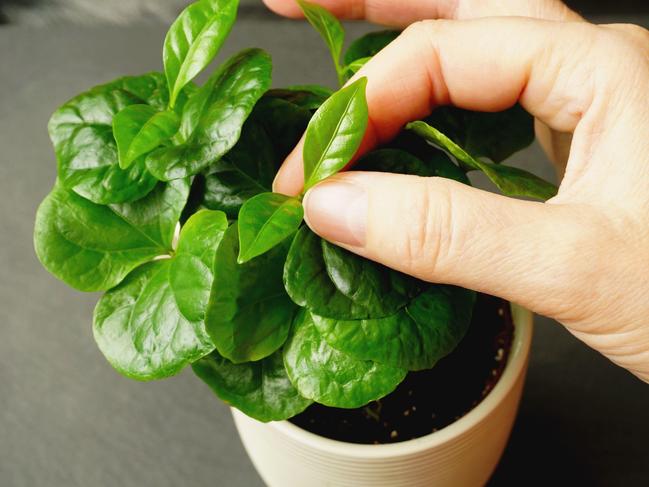How to grow your own coffee shrub
In home gardens, coffee plants can be grown as a screening hedge, as specimen shrubs or in large pots.

The world drinks a lot of coffee. The International Coffee Organisation estimates production for 2021-22 at nearly 170 million 60kg bags and predicts demand will keep increasing. You could grow your own. Coffee is an attractive large shrub with dark, glossy green leaves, fragrant, starry white flowers in spring and crimson berries in summer. It needs a warm to hot and humid climate, ideally in a lightly shaded and sheltered location with regular moisture and enriched soil. In their wild home of Ethiopia and Kenya trees can reach 10-12m tall, but in regions like Sydney, 5m is more likely. Commercially they’re grown as tall hedges for ease of harvesting; most Australian plantations are in northern NSW and Queensland, particularly the Atherton Tableland.

In home gardens, coffee plants can be grown as a screening hedge, as specimen shrubs or in large pots. Keep the shallow roots well mulched, and ensure a steady supply of both water and nutrients. Expect the first berries in two to four years (sooner from cutting-grown plants) and good yields after five years; trees can be productive for more than 30 years. The flowers have a jasmine-like scent (although coffee is in the same family, Rubiaceae, as gardenias), and are pollinated by bees and other insects. Although self-fertile, plants have better yields and bean quality when cross-pollinated. The long clusters of berries – often called cherries – start green and then gradually ripen over six to nine months to dark crimson, with red inner pulp that is soft and sweet, enclosing two seeds or beans. The cherry pulp, once discarded or used as fertiliser, is finding new uses as coffee cherry juice, coffee flour and in skincare products, valued for its high levels of anti-oxidants.

To extract the beans, the coffee berries are either dried before the pulp is mechanically removed or else wet processed, where the berries are soaked and washed to remove the pulp. After either method, the green beans are soaked to initiate a fermentation process to remove the slippery coating and improve flavour, then dried and hulled to remove the tough parchment layer. Roasting is the critical phase to impart the characteristic colours, aromas and taste, during which the beans expand in size by about 60 percent.
After brewing your coffee, spent coffee grounds should be composted before adding to the garden. The caffeine, chlorogenic acid and tannins in grounds inhibit the growth of small plants but dissipate after composting, leaving a good source of organic matter and some nutrients.
The two main coffee species are Coffea arabica, which accounts for about 75 per cent of world production, and Coffea canephora, the species that produces what are commonly called robusta beans and another genetic group referred to as conilon. C. canephora plants are hardier, more productive, more resistant to pests and diseases, and the cherries ripen more uniformly. The beans have a higher caffeine content but a harsher flavour, used mostly in blends and instant coffee. There are another 130 or so wild species whose genetic diversity offers potential in breeding new varieties with improved disease resistance for future coffee production.
-
Q&A
Our pear tree of 10 years, espaliered along the back fence, is healthy but never fruits. Can we help it? Christine Potter, Gold Coast
Pears are best in cool and temperate climates, needing significant winter chilling to set flowers and fruit, but low-chill cultivars can fruit in the subtropics. Also, most cultivars are self-infertile, needing cross-pollination from a different but compatible variety. The cultivar ‘Hood’ is low chill and can produce fruit alone when fully mature.
Is cold tea good for the garden? Helen Mahoney, Brisbane
Liquid tea is mostly water and can be used anywhere. Black tea leaves are a source of organic matter and slightly acidic. They contain 3-4 per cent nitrogen, good for leafy growth, and 0.1- 0.2 per cent of both phosphorus and potassium. Other elements in tea include aluminium, fluorine and manganese, which potentially could harm plants in large amounts. You can use tea leaves on any plants in small doses or add them to the compost.
What creeper could disguise my shed wall just outside the dining window? It’s east facing with sandy soil. Would star jasmine grow 3.5m tall? Anne Dryden, Bellarine Peninsula, Vic
Star jasmine (Trachelospermum jasminoides) is the best climber to cover a shady wall evenly from bottom to top. It can grow that tall. Alternatives include bower vine (Pandorea jasminoides) or one of its cultivars such as the Bellz series; or snake vine (Hibbertia scandens), a native with yellow blooms. Native bluebell creeper (Sollya heterophylla) is lovely but grows only 2m.


To join the conversation, please log in. Don't have an account? Register
Join the conversation, you are commenting as Logout